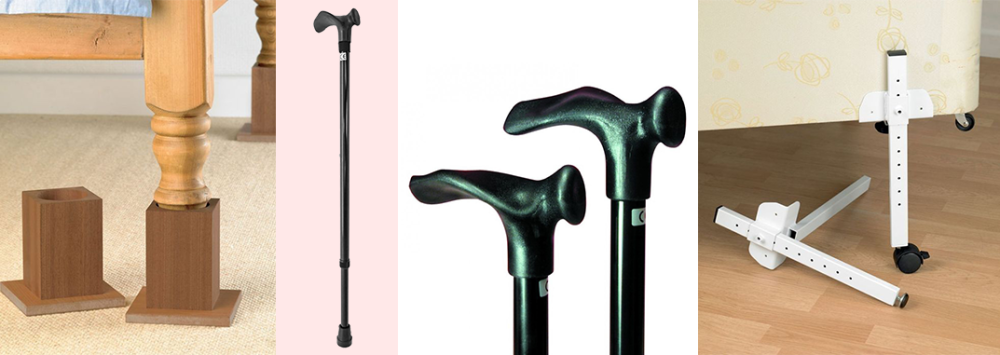
Walking Canes for Upright Comfort and Independence
Sally Madeley-Carr, OT25 Jan 2022
Walking Canes
Walking canes were originally the sign of a man's wealth and standing in society. Men posed with them, rather than use them as a tool or aid of any description.
Canes could conceal knives or swords for defence and were used by shepherds to catch and control their sheep. Carrying a cane denoted authority and could also be used to aid walking over uneven terrain.
It wasn't until after the second world war that walking canes became mobility aids.
The Purpose of a Walking Cane
For people who find walking not fully in their grasp, walking canes make walking safer, easier and more comfortable. Used correctly, they can take the weight off your lower back, hip, leg, knee and foot.
One in ten older adults will make use of a cane, for balance, stability and an overall state of wellbeing and independence.
Walking canes work well for people with injury or pain to one side of the body, whereas walkers are best-suited to those who have injury or pain centrally, or to both sides.
An individual may use a cane for a number of reasons, some temporary and some permanent.
Temporary use of a cane may be because of:
- hip, leg, knee, or foot injuries, to reduce the weight placed on the damaged area
- bone fractures and the need to take weight off them, to allow repair and recovery
- inner ear infections, which can affect one's balance
- joint inflammation, which may cause pain and distorted walking
- obesity, which forces excess weight onto the legs and feet
- vertigo, which presents itself as dizziness and a possible balance problem
- a need for recovery from surgery.
Permanent use of a cane may be because of conditions present since birth, or for long term or permanent health conditions which have developed during one's lifetime. Amongst others, these could include:
- arthritis
- stroke
- chronic alcohol misuse
- multiple sclerosis
- Meniere's disease
- Parkinson's disease
- cerebral palsy
- muscular dystrophy.
Walking Cane Support
A walking cane will help support individuals who are recovering from injury or ill health, have health conditions which will benefit from the use of a cane and also those who are concerned about balance, stability, or weakness in their legs. Cane support will also help elderly people remain independent a little longer into older age.
Walking canes reduce the stress placed on the lower body and limbs and can also help prevent falls.
Feeling unsteady one one's feet can affect both confidence and independence, so making use of a walking cane when it feels right to do so can help stabilise one's mood and improve one's overall state of health and calm.
Walking canes improve overall balance and so reduce the strain on the back muscles, which are continuously supporting your body frame and helping you maintain your balance.
How Walking Can Help with Some Health Conditions
- Arthritis
If you have arthritis in your body or legs, walking is one of the best forms of exercise.
Walking helps you lose or maintain your weight and can reduce the stresses placed on your joints, helping reduce pain and discomfort. A walking cane as an aid gives the confidence to take those early steps.
Walking can reduce arthritic pain in the knees and can reduce stiffness which, in turn, can increase the range of movement in the knee joint. The return of a healthier level of mobility will make life feel more positive.
Walking releases pain-fighting endorphins and also reduces inflammation.
With the use of walking canes, regular walking will help reduce the discomfort of arthritis and lead to better mobility.
- Strain, Accident, or Surgery
Whilst in recovery, or during rehabilitation, from an event which has made walking somewhat difficult, a cane will support the body and reduce the weight which would normally be placed on the lower limbs. This will aid recovery.
- Obesity
Obesity places a huge strain on all of the body and walking can both help reduce weight and improve overall health. The early stages of exercising will benefit hugely from the use of walking canes over short distances, until the body becomes trimmed down and is ready to support itself.
- Vertigo
Vertigo is similar to the feeling of a severe hangover and can be extremely debilitating. Support with walking, bed raisers may be needed, until medication or treatment has an effect on dizziness, sickness and wobbliness.
- Chronic Alcohol Misuse
Chronic misuse of alcohol can lead to alcoholic neuropathy, nerve damage which can lead to tingling in the limbs. Support with walking may become a need.
Measuring up to the Walking Cane
Like getting the right shoe size, getting the right fit of walking cane is paramount to its successful use.
The way to get the right walking cane size for you is:
- with your shoes on, stand upright with your arms by your sides.
- place the base of the walking cane about four inches (15 cms.) from outside your foot
- ask someone to measure the length between the floor and your wrist. This wrist point will be around the same point at which the hip socket and leg bone meet.
A perfect cane length will allow your upper arm to be vertical and the lower arm to be bent forward slightly, allowing you to comfortably hold the cane's handle.
The Correct Way to Use a Walking Cane
A walking cane should be held in the hand on the opposite side to your injury. When walking, this allows the cane to give support to the injured side of your body.
The leg on the injured side of your body and the cane act as one, both moving forward together. This way, you can place your weight onto the cane instead of your leg, when walking.
Do not place your cane further forward than the leg, as this could cause a lack of balance and maybe lead to a fall.
Different Styles of Walking Cane
Walking canes come in different styles, the design sometimes being specific to particular use. Some of the most common are:
- the standard, fixed, walking stick / cane, which is the most commonly used
- the offset cane - the handle on this design resembles a swan's neck and allows the user to place their full weight on the shaft, taking some pressure off the hand and wrist
- the adjustable quad cane - the swan neck places the user's weight firmly over the shaft and the base of this cane has four base points, giving much more stability
- the folding walking stick - this model has four parts, allowing the owner to fold the walking aid into a smaller size, to keep on one's person
- the arthritis grip cane - this folding model has a handle designed for people who have arthritis in their hand(s), allowing a more successful grip for walking safely.
Put a concentrated effort into learning what it is you need from a walking cane (i.e. lifestyle, daily routines, level of desired independence and social requirements) and maybe seek professional advice as to which walking cane will meet your needs.
Walking Cane or Walking Frame?
Walking canes work well for people with injury or pain to one side of the body, whereas people who have central body pain, or pain to both sides, will find the walker a better choice.
A walking frame is more cumbersome than a walking cane, as it needs more space to turn.
The user of a walking frame needs some element of upper body strength, as the frame needs lifting forward in order for the user to step forward.
A walker can have wheels, making it easier for the user, though overstretching forward can lead to a fall.
A walker with wheels may also have a brake, useful for when the user wishes to be standing whilst stationary e.g. in a queue, or whilst chatting.
Summary
The purpose of a walking cane is to take pressure off the lower part of the body and to stabilise balance.
Walking canes can support people with injury or pain to one side of the body, whereas walkers support those who have injury or pain centrally, or to both sides.
The length of a walking cane must always be adjusted to suit the user, as too short or too long could lead to discomfort and even a fall.
The four parts of a folding walking stick are held together with elastic bungee cord, which maintain the format of this handy walking aid.
All canes must have a non-skid rubber foot.
When letting go of a quad cane, it will stand up on its own.
Using a walking cane as a mobility aid can help the user hold on to independence and maintain their self confidence.
Finding what is best for you is important, though some users may find that simply having access to both walking cane and walking frame suits their varying needs e.g. a cane in the house or for short distances and a walking frame for longer journeys outdoors.

Sally Madeley-Carr, OT
Sally qualified as an Occupational Therapist in 1996 and is a well-respected professional in the field of rehabilitation equipment and living aids. She has worked in private practice and within the NHS, developing a broad experience with adults and children. Click here for Sally's registration with the Health and Care Professions Council. The HCPC regulates health, psychological and social work professionals in the UK.